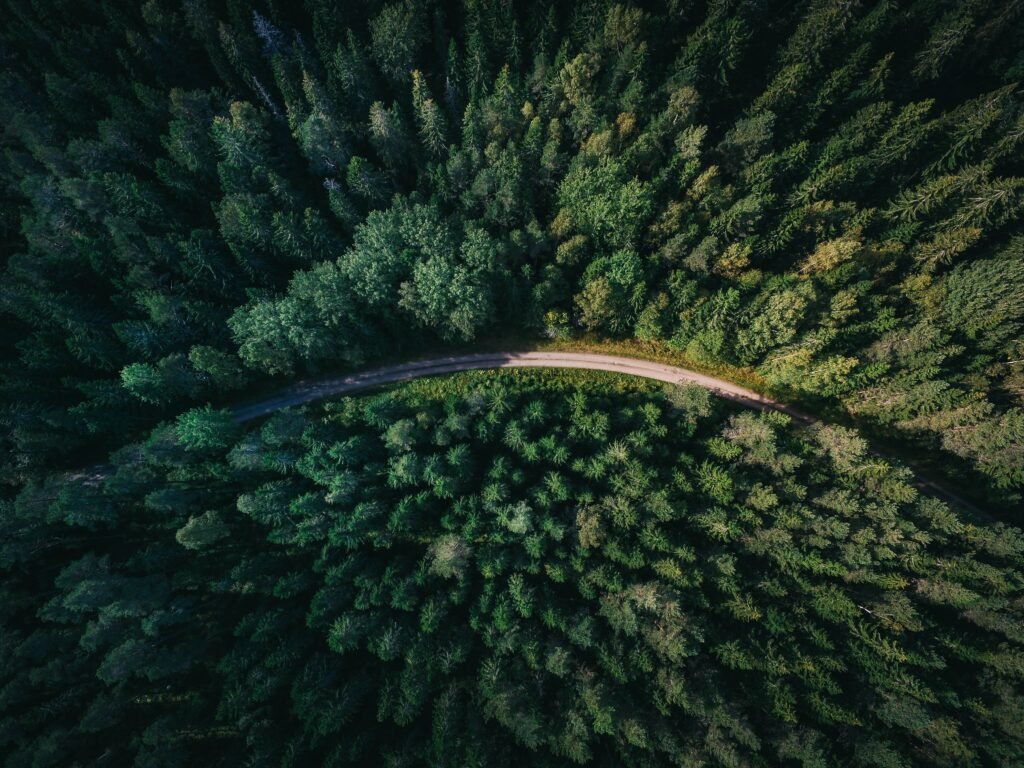
Photo: Unsplash.com
Prescribed burning of the forest floor, which simulates a spontaneous fire, is a nature management measure aimed at preserving endangered species of insects, birds and plants. Prescribed burning, which is widely used abroad, is also relevant in small areas in Dzūkija.
“In previous centuries, fire played a very important role in forest landscapes. Therefore, there are many species that settle in places where there was once a fire. By eliminating fire from territories, we gradually push those species out. The idea of nature conservation that we have to protect by doing nothing is not suitable in this case – we have to do something,” said Gediminas Brazaitis, Professor of the Academy of Agriculture of Vytautas Magnus University.
Prescribed burning is not a forest fire
Prescribed burning is carried out when there is the lowest risk of harming nature. Most animals and birds are able to safely escape. Since the burning is not intense, reptiles or other creatures safely hide in caves in the ground.
The vegetation to be burned (mosses, shrubs) is usually widespread and its loss in a given area is beneficial because it removes strong competing species. Burning can also help control pests or invasive plants. Mature trees such as pines, oaks or birches are naturally fire-resistant. In addition, even in the burned area, unburned areas remain.
It is important to note that a prescribed burn is not a forest fire. It is characterized by a low flame, light smoke and lower temperatures. Such low-intensity prescribed burns do not damage the trees due to the fire-resistant bark of the trunk, and do not reach the tops. The spread of the fire is controlled.
Can prescribed burning become uncontrolled?
One of the most important questions is whether it is safe to implement such an environmental protection measure? When carrying out prescribed burning, a lot of preventive measures are taken to ensure the safety of the process.
First of all, the forest floor is suitable for burning for a relatively short time. Specialists determine when the time is most suitable to implement the environmental management measure.
Secondly, the area is delimited by a mineralized strip of soil, which is moistened before burning, and weather conditions are assessed. Prescribed burning of the floor is started in an upwind direction and is constantly supervised by a team of professional specialists.
Thirdly, in order to ensure safety, firefighting teams and a reserve team of volunteer firefighters are on duty around the burning area. If necessary, they can “discipline” a fire approaching the boundary at any moment with a stream of water supplied by fire hoses. A fire engine is on duty nearby. After prescribed burning, the fire site is monitored for several more days.
Why is prescribed burning useful?
In Lithuania, species of insects, birds and plants that like them very quickly settle in former fire sites. Most of them are endangered and protected, listed in the Annexes to the EU Birds and Habitats Directives and the Lithuanian Red Book.
In natural target forests, fastidious birds of prey find the best conditions – three-toed woodpecker, barn owl, and screech owl. Fire damage is necessary for such protected birds as the woodpecker, capercaillie, black grouse, wood grouse, common wagtail, and cuckoo.
Fire sites create conditions for the growth of various herbaceous plants, the flowers of which are visited by various hymenoptera and other insects that regulate the abundance of harmful insects. Also, endangered butterflies breed in the habitats formed by fires – the southern, black and pine satyrs – and the spotted lichen, which is already extinct in Lithuania. Open, sandy, burned areas are needed by the rare mountain grasshopper and rare species of locusts.
Only in existing and former fire sites can such heat-loving beetles as the scaly, copper-bellied, spotted and other shiny beetles and the whiskered scaly beetle successfully breed.
The rare areas created by fire damage are also needed by such protected plants as the wind-blown sedge, mountain arnica, three-horned sedge, dark-leaved ragwort, multi-lobed sedge, sand-carnation, rough hawkweed, Gorski’s puffball, Lithuanian nightshade.
In the spring, it is planned to implement this nature management measure in the areas provided for in the nature management plan of the Dzūkija National Park – in the open continental dunes.
Views and opinions expressed are however those of the author(s) only and do not necessarily reflect those of the European Union or CINEA. Neither the European Union nor the granting authority can be held responsible for them.
